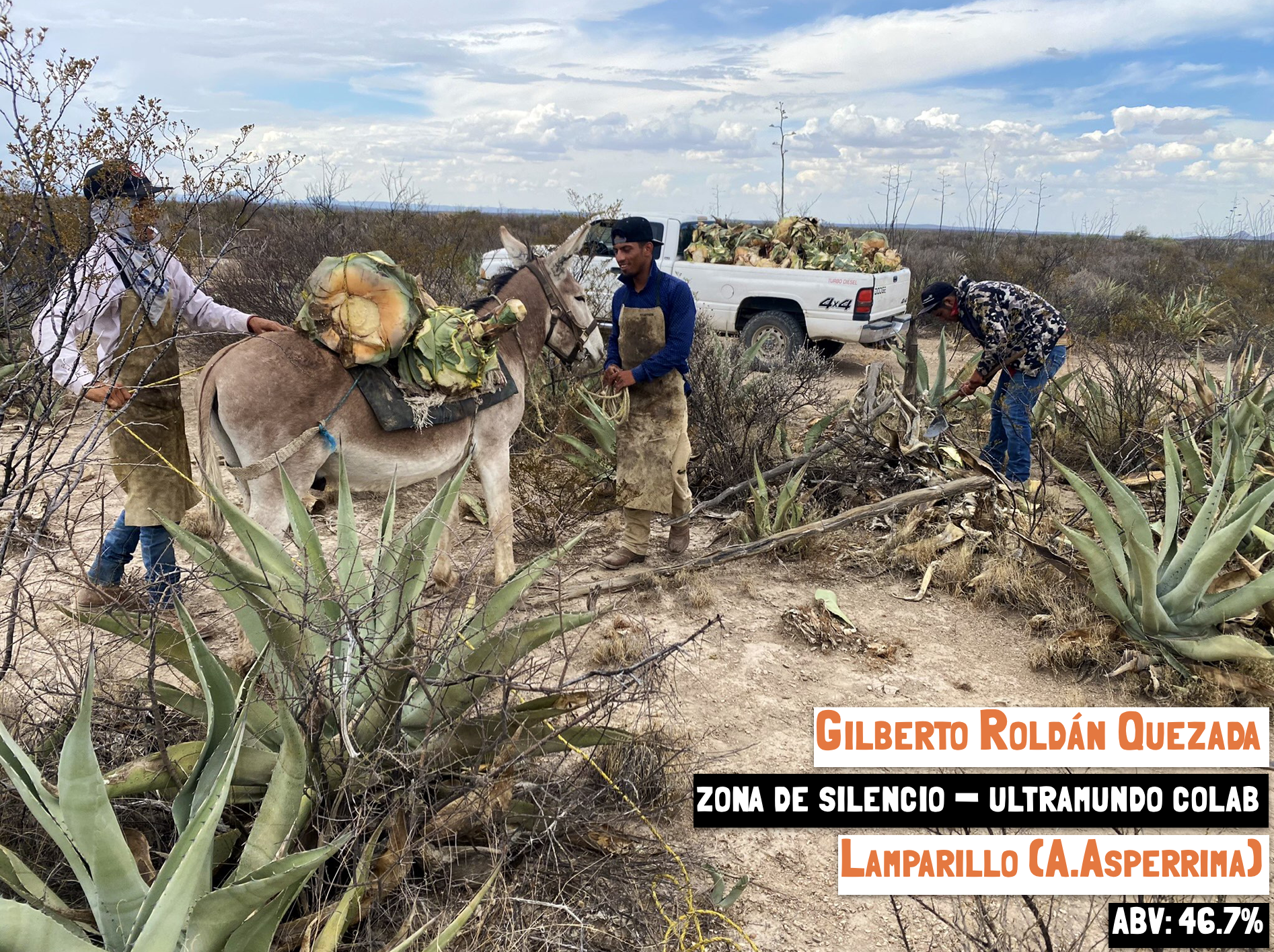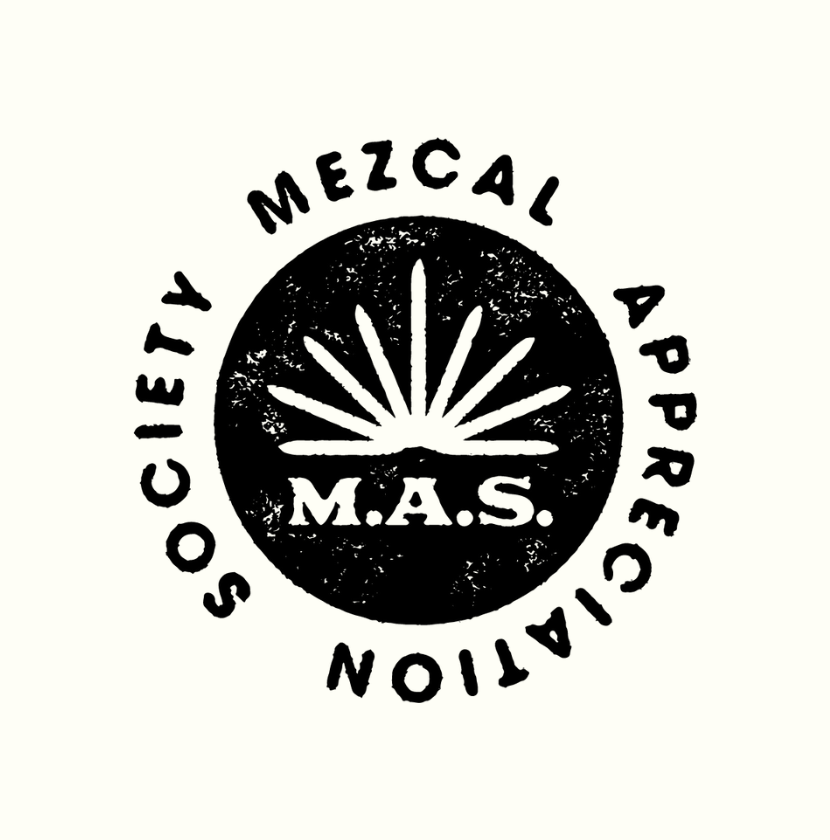Lamparillo - Zona del Silencio
Batch: D-GRQ-01
Release date: December 2022

At a glance:
- Maguey: Lamparillo (A. Asperrima)
- Producer: Gilberto Roldán Quezada
- Agave region: Mapimí zona del silencio desert, Coahuila/Durango
- Processing region: Nombre de Dios, Durango
- Cooking: 3 days over hot rocks in earthen horno
- Milling: By hand with axe
- Fermentation: 3-4 days in 'coffin' style wood lined in-earth pits
- Distillation: Double pass in Durango style hybrid (see below)
- Composition: Heads, hearts and tails
- Batch size: 100 litres
- Date of production: September 2021
- ABV: 46.7%
We’re extremely pleased to present this very special bottling. It represents a collaboration with friends at a fascinating new project called Ultramundo, as well as another UK first for The Sin Gusano Project.
The Mapimí Silent Zone (Zona del Silencio) is a patch of desert in the north of Durango, close to the border with Coahuila, that overlaps with the Mapimí Biosphere Reserve.
The silent zone is legendary for being… you guessed it… silent. Urban legend has it that no radio or other signals can be received here, and there are stories of plane crashes due to failed instruments as well as UFO sightings. Nopales also grow purple (see below)!
Having stayed on a ranch in the middle of the bio-reserve for a few nights, we can testify to the silence… and lack of phone signal. The place is vast. It’s hard to do it justice with these pictures.
It’s right here that the family behind Ultramundo has 24,000 acres of land, covered in wild maguey Lamparillo (A.Asperrima) and Sotol. It’s a fascinating story because this specific region has no history of agave spirits production, meaning these plants with their specific desert terroir have never been distilled and tasted before.
With so much land and agave to play with, the Ultramundo project intends to leave a minimum of 20% of their mature agave to go to seed, which should ensure a plentiful supply for making spirits without a negative impact on ecosystem of the region.
The agaves themselves are 100% wild and estimated to take 15-20 years to mature in this arid desert environment. They have a rough sandpaper like texture and a light greyish-green colour with faint striping or marbling that you also sometimes see on agave Marmorata (Tepextate, Pizorra).
Each mature agave that’s used for mezcal is left capon (flower stalk cut) in the desert for about 10 months before being harvested and carried out of the maze-like desert by donkey.
The Ultramundo project is looking at building its own distillery at source (in the middle of the desert). It will be fascinating to see how that goes and taste the first batch made there.
But for this special batch, the desert-harvested piñas were trucked a few hundred miles south to Durango’s mezcal hub, Nombre de Dios, where respected local mezcalero Gilberto Roldán Quezada went to work.
In keeping with the style of the region, the agaves were roasted in a classic in-earth horno fired by mesquite and pine wood for 3 days, before being mashed entirely by hand-wielded axe.
Fermentation is then a 3 days process in wood-lined in-earth wells measuring around 6 feet long, 2 feet wide, and a few feet deep.
Check out batch D-RA-02 for more pictures of this style of ferment and distillation.
The Durango style alembic still has a copper boiling pot with this tapered Dr-Who-Dalek-like filipino style wooden condensing chamber on top. Unlike a filipino still proper, there is no in-still capture. Rather the vapor is forced out of a hole in the top wooden chamber into a serpentine condensing coil, submerged in water.
During distillation a kind of agave syrup mud is used to seal any gaps in the top of the wooden condensing chamber. It’s a fascinating hybrid set-up that seems to merge styles from other regions of Mexico… although we couldn’t tell you which came first.
Multicolumn
Multicolumn

Gracias Gilberto & Ultramundo
House Tasting Notes:
Immediately unusual on the nose for even the hardened mezcal aficionado. Big notes of spicy green peppers like jalapeño and really vegetal but in a dusty and sweet & sour way that sets it apart from the vegetal tones you might expect from a Tepextate for example. The complex yet balanced flavours follow through on the palate with notes of olive and pepper with a background of leather, all the while extremely restrained on the smoke. It’s unusual and incredibly moreish. The result of the desert experiment are an absolute winner for the taste buds.

Grab a bottle for your collection while stocks last:

Become a member and learn more about mezcal
Where your passion for mezcal transforms into a journey of discovery and delight. As a member, you'll gain exclusive access to curated tastings, educational events, and insider knowledge from industry experts.
Whether you're a seasoned enthusiast or a curious newcomer, our community provides a welcoming space to explore, share, and savour mezcal like never before. Join us and immerse yourself in the art and culture of mezcal, one sip at a time.











